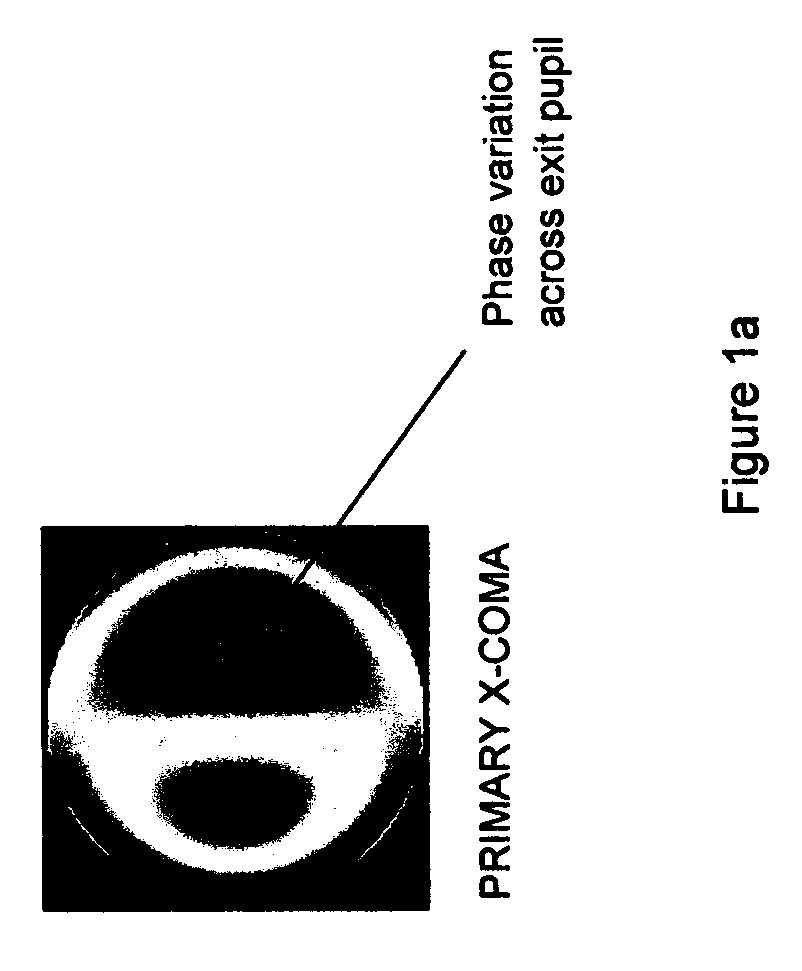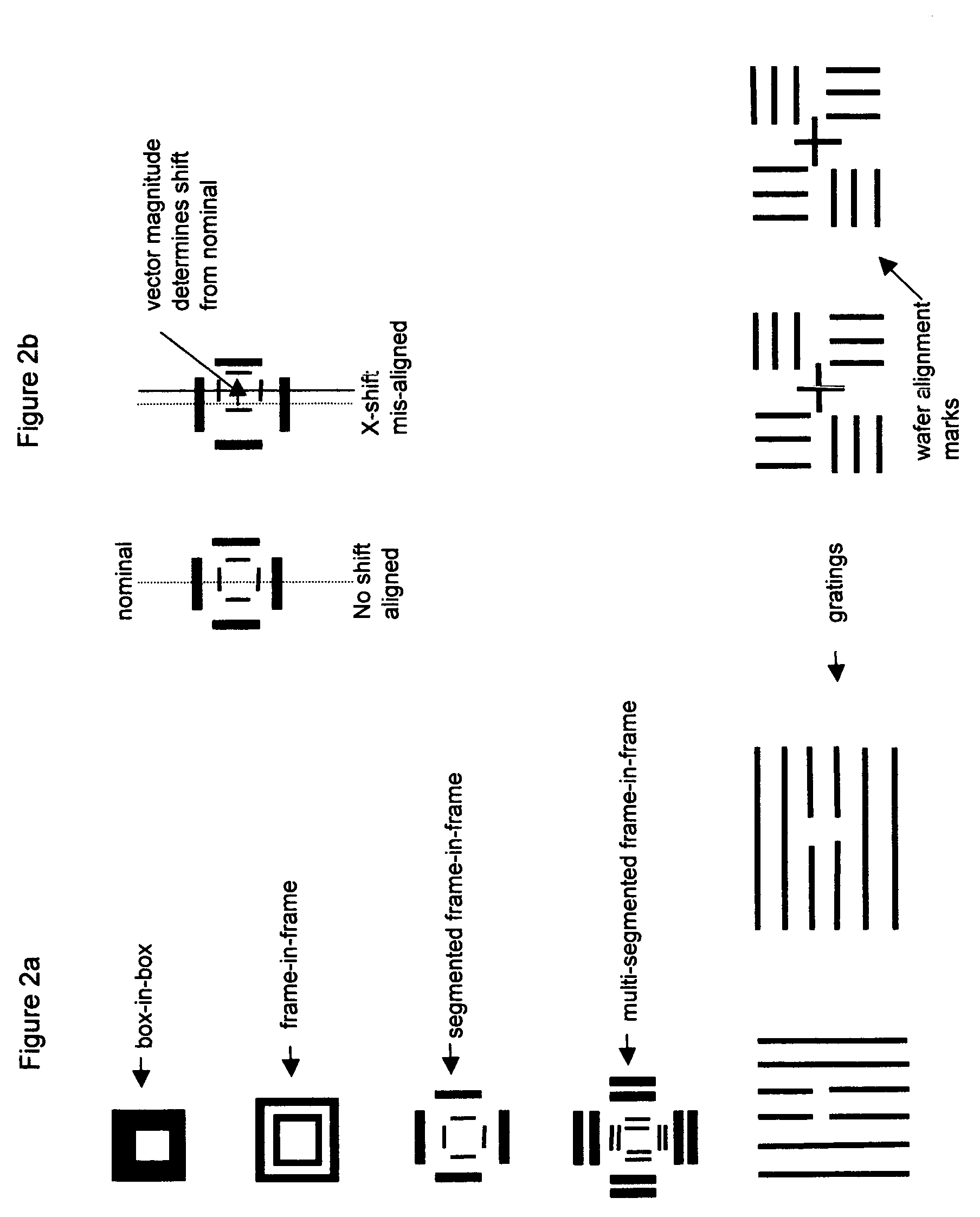Process for determination of optimized exposure conditions for transverse distortion mapping
a technology of exposure conditions and mapping, applied in the field of optical metrology, can solve the problems of reducing the overall focus budget, difficult control of lithography processes, and various sources of overlay errors for both targets and patterned features, so as to reduce large feature shifts and accurately determine zernike terms a2
- Summary
- Abstract
- Description
- Claims
- Application Information
AI Technical Summary
Benefits of technology
Problems solved by technology
Method used
Image
Examples
embodiment
Preferred Embodiment
[0065] A particular process for providing an illumination source for the accurate determination of Zernike tilt coefficients in the presence of coma in accordance with the invention is described. Large feature-shift coma sensitivity is simulated for a range of illumination conditions. The resulting source sensitivity data is modeled and a practical array of source shapes, each of which is optimized to eliminate the effects of transverse distortion due to third-order coma, is identified. In this way, the present invention provides a process for providing an illumination source for which the effects of coma (third-order) on overlay alignment attributes feature-shift are eliminated, and lays out the details to calculate a2 and a3 more accurately using a photolithographic exposure tool and a variety of distortion measurement methods. Before describing the step-by-step process for the preferred embodiment and practical applications, we formulate third-order coma in te...
PUM
 Login to View More
Login to View More Abstract
Description
Claims
Application Information
 Login to View More
Login to View More - R&D
- Intellectual Property
- Life Sciences
- Materials
- Tech Scout
- Unparalleled Data Quality
- Higher Quality Content
- 60% Fewer Hallucinations
Browse by: Latest US Patents, China's latest patents, Technical Efficacy Thesaurus, Application Domain, Technology Topic, Popular Technical Reports.
© 2025 PatSnap. All rights reserved.Legal|Privacy policy|Modern Slavery Act Transparency Statement|Sitemap|About US| Contact US: help@patsnap.com



